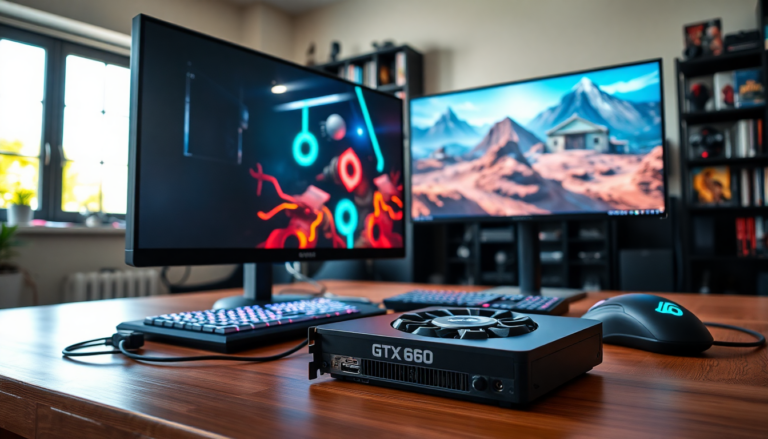Argomenti trattati
As gaming technology pushes the envelope, the expectations for graphics processing units (GPUs) have evolved at a breakneck pace. If you’re still holding onto an older GPU like the GTX 660, recent tests might deliver a reality check. So, what does this mean for gamers who want to explore modern upscaling technologies on their aging hardware? Let’s dive in and find out.
Market Overview: The Evolution of GPUs
The landscape of GPUs has transformed tremendously since the GTX 660 hit the market over a decade ago. Back then, this mid-range card was a powerhouse, built on Nvidia’s Kepler architecture and boasting features that were cutting-edge. But as gaming engines and graphics technologies have evolved, the benchmarks for what constitutes an adequate GPU have shifted dramatically. Are older models like the GTX 660 still relevant in today’s gaming world?
Recent tests reveal that while the GTX 660 does support upscaling technologies like AMD’s FidelityFX Super Resolution (FSR) and Intel’s XeSS, it struggles to deliver playable frame rates in modern games. The root of the problem lies in its aging hardware and the lack of computational muscle to handle the demands of contemporary gaming.
Take a look at the performance of the GTX 660 in games like Counter-Strike 2, GTA V, and the much-lauded Cyberpunk 2077. You’ll see a stark contrast in performance across these titles. For instance, Counter-Strike 2 can run at respectable frame rates on minimum settings, but even here, the experience takes a hit when trying to employ upscaling methods. So, is it time to rethink our reliance on older GPUs?
Performance Analysis: Testing the GTX 660
In recent hardware tests, the GTX 660 was put through its paces across several popular titles, yet only a handful were equipped with upscaling capabilities. Counter-Strike 2, for example, managed to hit around 80-90 FPS at 1080p resolution. However, attempts to boost performance using FSR didn’t yield any significant benefits. This suggests that while the card can still function in less demanding environments, it simply doesn’t have the power to fully embrace modern enhancements.
On the flip side, Cyberpunk 2077 really highlighted the GTX 660’s limitations, with frame rates crashing to a mere 10 FPS at native settings. Even when FSR adjustments were applied, performance barely improved, often resulting in crashes or severe frame drops. This clearly indicates that while upscaling technologies aim to enhance performance, they aren’t universally compatible with all hardware—especially older models. How much longer can we expect these older GPUs to keep up?
The architecture of the GTX 660 faces even stiffer challenges due to the requirements set by modern upscaling technologies. For instance, both XeSS and FSR demand a level of computational efficiency that the Kepler architecture simply can’t provide. The GTX 660’s support for Shader Model 5.1 falls short compared to the Shader Model 6.4 needed for optimal performance with newer technologies. The writing seems to be on the wall.
Understanding the Technical Limitations
The age of the GTX 660 is a key reason for its struggle to keep pace with advancements in GPU technology. Its specifications, including shader cores and memory bandwidth, are not equipped to handle the compute-intensive processes involved in upscaling. While FSR is designed to support older hardware through fallback mechanisms, the performance trade-offs can be significant. Can gamers really afford to settle for less?
Moreover, the architecture’s reliance on FP32 for operations means that even if it technically runs FSR, the efficiency is hindered by the constant conversions from FP16, which newer architectures handle natively. This inefficiency leads to increased processing times that often negate any potential performance benefits that upscaling might offer. So, as we look ahead, it’s becoming increasingly clear that relying on older GPUs like the GTX 660 may not be a sustainable strategy for a competitive gaming experience.
The gaming landscape is shifting rapidly, and while upscaling technologies promise to bridge performance gaps, they can’t compensate for the inherent limitations of aging hardware. Are you ready to consider an upgrade, or will you continue to ride the wave with your trusty GTX 660?

